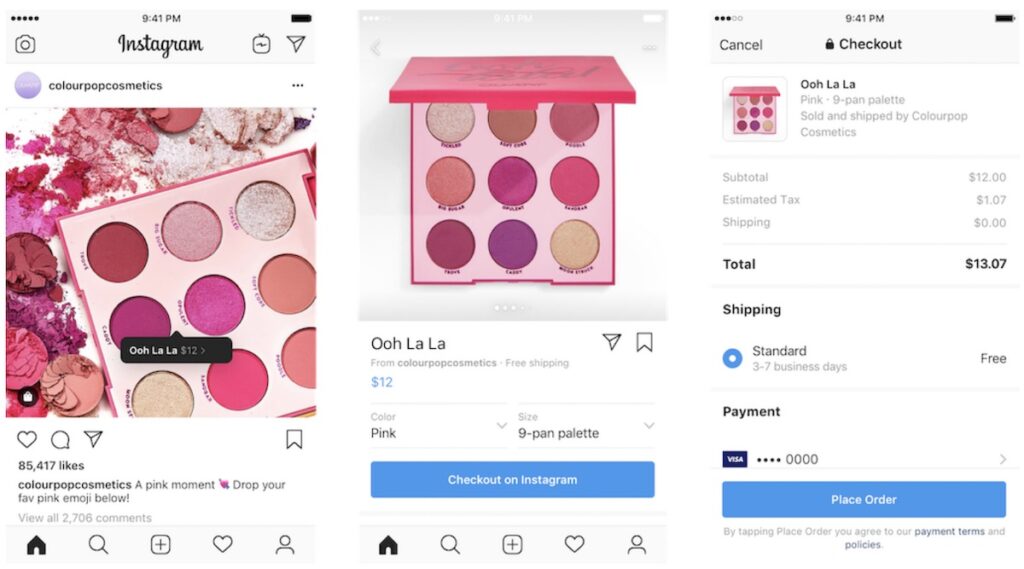How To Best Reach, Market and Sell to Millennials
Tom Armitage
Its not where and when you think
Millennials (born 1981 to 1996) make up a significant portion of today’s population – 25% actually. And within the next year or so, they’ll make up more than half of the workforce.
For brands, they have tremendous buying power. They are now at the age where they are graduating college, growing their careers, having families, buying homes, traveling, investing in the stock market, etc.
Because of this, Millennials are a critical audience type for many brands and it’s worth considering some of the significant impacts they have, as well as how you and your PR and marketing teams can continue to best adapt your tactics to convert these tech-savvy folks better.
Here are the five biggest areas that should be considered if your brand’s most coveted audience is made of Millennials.

1) New School PR
When we think about traditional public relations, press releases, news conferences, and publicity stunts might be the first that come to mind. On a deeper level though, we might consider this team being “the voice of the company.”
PR has been responsible for controlling the message, developing and maintaining a positive perception, improving brand reputation, and making sure relevant, newsworthy information flows and penetrates its way into the minds of consumers.
With the emergence of digital, are all those things still important?
Of course.
They have not gone away; they’ve simply changed.
VHS doesn’t exist anymore. But movies are as big as ever. In fact, Netflix recently claimed that more than 45 million accounts watched its made-for-stream movie Bird Box. There wasn’t a VHS player in site but look at that incredible reach.
The rules of PR are different today. It’s still about messaging, reputation, awareness, and relationships, but there are tools and technologies available today to help us do our jobs differently.
- -PR is now responsible for social media to disseminate content, in addition to social engagement to help control message and voice.
- -PR must pay attention to bloggers and influencers, rather than just the media.
- -“Pay for play” is a real thing. It might blur the lines of journalistic ethics, but that’s the world we live in.
- -Everything must be measured, and PR must fully understand and embrace analytics.
With Millennials really acting as the drivers behind social media, it’s important that PR teams understand the usage patterns of Millennials and apply new digitally-focused tactics.

2) Next Big Thing: d-Commerce and Social Buying
Often dubbed as d-commerce (digital commerce) or m-commerce (mobile commerce), these general terms encompass the many ways that consumers can purchase products through digital means.
There are 7.6 billion people in the word. Among those, 1.66 billion have bought online, and that number is expected to grow to 2.14 billion within the next two years. That shows the buying potential among the masses – and Millennials do this without even thinking twice.
To me, this is the future of PR and marketing: being more mindful of the buying patterns of our audience and allowing them to have a better buying experience.
The biggest shift here is social buying. We’ve already see some of the larger brands perform tests to integrate their online shops with Instagram ads – called Checkout – to showcase products and act as an extension of their online storefronts.
To buy something on Instagram, users tap on a photo’s “product tag” and are shown an option to “Checkout on Instagram.” Users then enter their contact information, address and payment information to purchase a product. That information will be saved on Instagram for future purchases, and users manage their orders through the photo-sharing app. The new feature also gives Instagram, which earns money from ads, another way to rake in revenue. During the test of the checkout feature, the company is charging brands a selling fee to help fund the checkout feature and offset credit card processing costs and other expenses. Instagram could also use a person’s shopping history to show more targeted ads.
From voice-activated purchases through Google Home or Siri, or one-click purchases through Amazon, it’s evident that brands are helping consumers buy more quickly and, fingers crossed, more often.
Marketing and PR folks need to be mindful of the presentation of their products and the user experience on their websites that allow for more improved ads and content delivery.

3) Peer Influence To Help With Purchases
Let’s say your best friend told you to buy a Mazda because she just purchased one and liked it. Then, you saw an ad from Mazda that said they make the best car on the market and their cars are highly efficient. Which would you believe more?
From Wordstream, 89% of Millennial consumers trust recommendations from their peers over ads. It’s plain and simple. Millennials are skeptics towards ads.
This is why brands need to focus more on education, entertainment and storytelling as influence tactics, rather than going straight for the jugular with direct selling techniques.
Sites like Google, Yelp, and Facebook contain review systems that let users review businesses and provide direct feedback. These ratings, which are seen and engaged upon by peers and fellow consumers, are trustworthy because these sites have terms and services in place that do not allow brands to offer incentives in exchange for reviews.
To encourage users to submit more reviews and upload more valid information, Google built a global program made up of serious reviewers with perks and gamification features (not to brag, but I’m at 5,273 points and counting!).
From 2016 to 2017, the number of guides in Google’s Local Guide program grew from 5 to 50 million. In that same year, 700,000 new places were added by guides each month.
Overall, peer reviews are incredibly important to Millennials in their buying decisions. Brands and businesses need to take review programs seriously to ensure they are not only getting more reviews, but they are garnering 5-star ratings with solid, genuine feedback.
On top of that, taking advantage of influencer marketing is vital for both big and small brands alike.

4) Authenticity Matters, And So Does Having A Crisis Plan In Place
It’s true that your marketing mix should change if Millennials are your point of focus. If you are still investing in broadcast TV and terrestrial radio…stop.
Research shows that Millennials are using streaming services. Spotify alone, which has a ton of competitors, has 150 million users – 72% of which are Millennials.
On the TV side, Netflix is approaching 150 million subscribers. Beyond the numbers, digital channels allow for extreme targeting and better tracking over traditional methods.
While where you are is vital, don’t stop your marketing mix choices there. Adjust what you say too.
Your message needs to resonate among this audience and encourage engagement and action. One of the best ways to do this is through transparency and authenticity.
First, make sure you aren’t afraid to show them what’s behind the curtain. Take care in your sourcing and procurement methods and make sure you are proud of what you sell and who works for you. Then show them.
Woven tightly within your social content, make these messages focused around transparency forward facing for all to see. That’s what Millennials are after.
Don’t forget about goodwill efforts and philanthropy. From Forbes, 84% of millennial employees give to charity, and 70% of them donate their time to charitable causes.
Remember, having cause-related efforts in place and being transparent is not a fool-proof plan for avoiding bad things from happening.
In fact, your outlook shouldn’t be: “I hope my brand doesn’t get hit with controversy.” It should be: “What should I do when it happens?” Because at some point or another, your brand will be struck by a crisis.
In the world we live in today, there’s a public outcry over everything. Social media makes it so easy for people to voice their opinions, whether warranted or not, and it puts your brand on the verge of being struck down at any moment.
How can you combat this?
First, make sure you have a system of checks and balances in place that’s made up of a diverse group of people.
Everyone has a different perspective, and a feedback loop with approval processes should consist of different viewpoints. This can help catch issues before they arise – before products, ads or posts go to market.
Secondly, put a crisis communication plan in place. You should:
- -Monitor media/social media mentions of your brand to catch issues as early as possible.
- -Have statements ready to go for issues you know may emerge based on your brand and product offering. Food companies, for example, may have statements on hand for product recalls or food safety issues.
- -Identify your spokesperson and make sure he/she is media trained. Ideally, you’d want a statement delivered via live stream or on video, so make sure he/she is comfortable in front of the camera too.
- -Have your crisis team identified and pre-select your distribution channels. Have members ready to act as customer service professionals. You will have an influx in comments and @ replies, and your team members should be prepared to respond quickly with accuracy, honesty, and transparency.
- -Delivery your message fast, within hours at most.

5) If you Can’t Beat ‘Em, Hire ‘Em
It’s one thing to study and learn about Millennials, but there’s no better resource than someone who is actually a part of the culture.
The fact of the matter is that Baby Boomers have a limited time here. Within 20 years or so, Millennials will become the single most prominent generation on the planet. It’s essential to have staff that can not only speak their language but also can walk the walk for added authenticity.
I tell my undergrad students that the most important skills you can leave with after graduation are writing skills and photo/video skills.
Writing will always be critically important. Whether it’s long articles, white papers or Instagram captions, solid and creative writing stands out, and it’s absolutely essential in our world.
Photo and video continue to be the most critical elements in one’s digital suitcase and having media-savvy in-house team members can make it much more efficient in getting content planned, created, produced and published – both quickly and at a lower cost.
If you remove engagement from your social media duties for just a second, you’re left with content planning, creation, and scheduling. Across those three tasks, creation is going to make up about 90% of that workload. It’s a huge time suck. If you plan on producing good, quality content, it’s going to take even longer. Having team members who can create creative work productivity will go a long way.
Among missing qualities from Millennials: business savviness.
For example, Millennials often lack an appreciation for profit margins, the average lifetime value of a customer, true return on investment, and the entire finance side of marketing.
Old PR was focused on awareness and reputation. In its merge with marketing and advertising as a result of digital, all of us are playing for the same team. That means, the bottom line becomes a central focus.
PR folks can no longer only lean on soft metrics like impressions or event sign-ups but should be turning their attention to hard metrics like form fills and sales. Putting a dollar value on everything is what really matters.
That also means having skills within analytics.
From Google Analytics to BuzzSumo to BrandWatch, the technologies we have today at our fingertips allow us to measure the impact of PR and marketing more effectively and tie it back to important, real business goals.